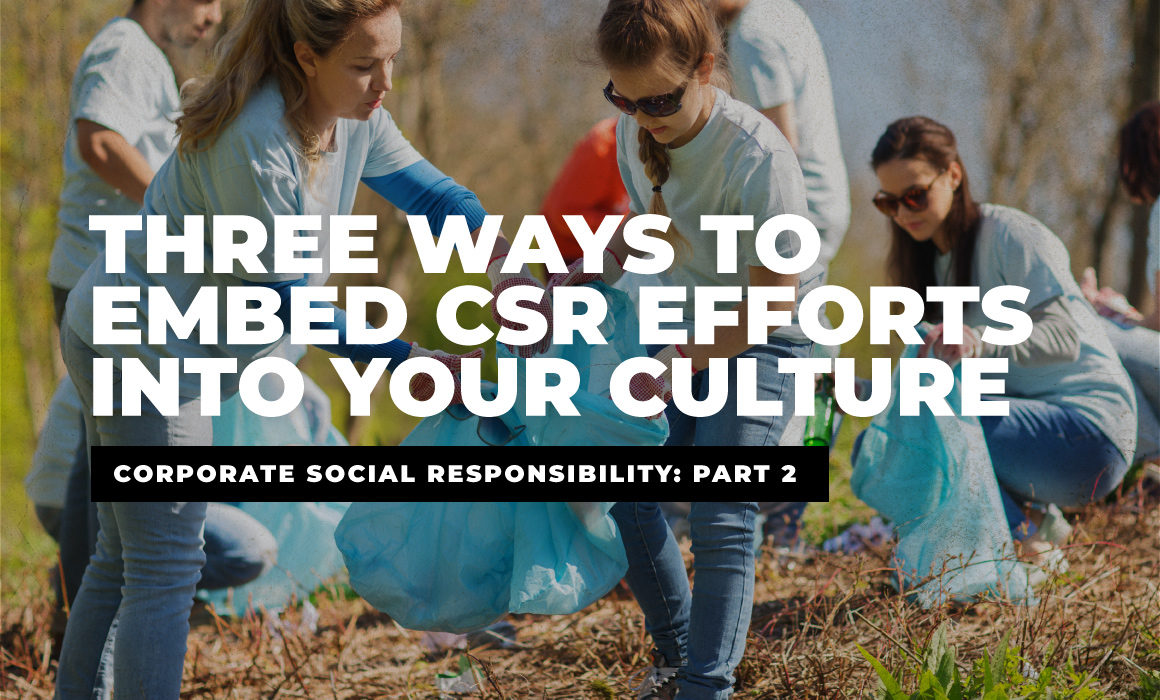Three Ways to Embed Corporate Social Responsibility Efforts Into Your Culture | Part II
In a recent post, we talked about why organizations should reexamine their Corporate Social Responsibility strategies to ensure they are authentic, meaningful, and resonant with employees. In this post, we share three ways to embed CSR efforts into your culture and sustain it over time.
It Starts with a Culture of Caring
If you don’t already have clearly defined mission, vision and values statements that reflect genuine care for the world around you, develop these (with employee input) and live by them. A culture of caring is reinforced from the top down – so a good strategy is to also use CSR as leadership development, manager training and accountability tools.
Managers can use CSR to encourage employee engagement such as volunteering and supporting community initiatives, and they gain the opportunity to grow as leaders in the process when they model behavior by joining boards, volunteering and taking a leadership role in the community. Leaders should also use activities such as volunteering to connect better with their teams and encourage collaboration.
Ensure CSR is grassroots and on target
CSR activities must be employee driven and leader-led. That means that employees contribute what is meaningful for them, but leaders are also engaged and supportive of the efforts – and that support must be in action, not just verbal support. CSR efforts must also be consistent and ongoing. One-off activities or hastily prepared events are not going to be viewed as authentic commitments to social responsibility by employees.
Employees also want to see a connection between the organization and the causes you choose to support. The activities shouldn’t be overly self-promotional, but they should feel consistent with what the company stands for. As an example, a company in the life sciences industry that works to improve STEM education efforts in lower-income schools has made a valuable connection with its industry and its CSR activities.
Make it a part of corporate storytelling
Having a robust CSR program can be meaningful for current employees as well as future recruits, but only if they know about it and see how it connects to the company’s culture and commitment to the community. Even though it may feel self-serving, it’s important to tell the CSR story internally and externally so that the connection is made.
Weave examples of your CSR activities and philosophy into every part of the employee experience, from recruitment and hiring to onboarding, performance reviews, leadership development and celebrations. Sharing individual stories of the difference your employees and your company are making in the world will bring a sense of connection to employees that few other opportunities provide.
Want to create an authentic Corporate Social Responsibility program to better engage employees? Take the next step and contact Katherine Coble.


